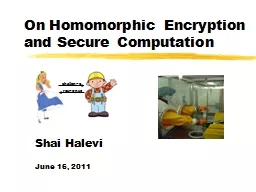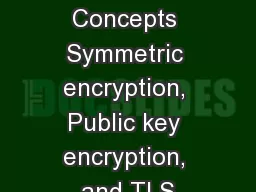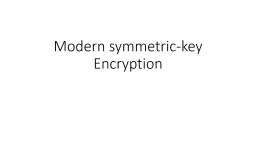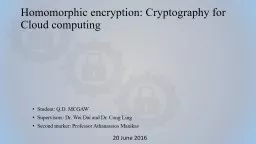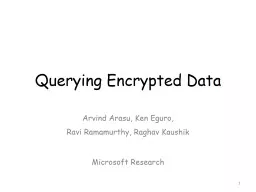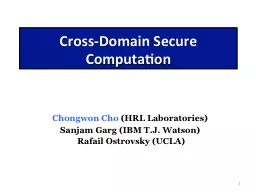PPT-On Homomorphic Encryption and Secure Computation
Author : yoshiko-marsland | Published Date : 2016-05-06
challenge response Shai Halevi June 16 2011 June 16 2011 2 Computing on Encrypted Data Wouldnt it be nice to be able to Encrypt my data in the cloud While still
Presentation Embed Code
Download Presentation
Download Presentation The PPT/PDF document "On Homomorphic Encryption and Secure Com..." is the property of its rightful owner. Permission is granted to download and print the materials on this website for personal, non-commercial use only, and to display it on your personal computer provided you do not modify the materials and that you retain all copyright notices contained in the materials. By downloading content from our website, you accept the terms of this agreement.
On Homomorphic Encryption and Secure Computation: Transcript
Download Rules Of Document
"On Homomorphic Encryption and Secure Computation"The content belongs to its owner. You may download and print it for personal use, without modification, and keep all copyright notices. By downloading, you agree to these terms.
Related Documents

